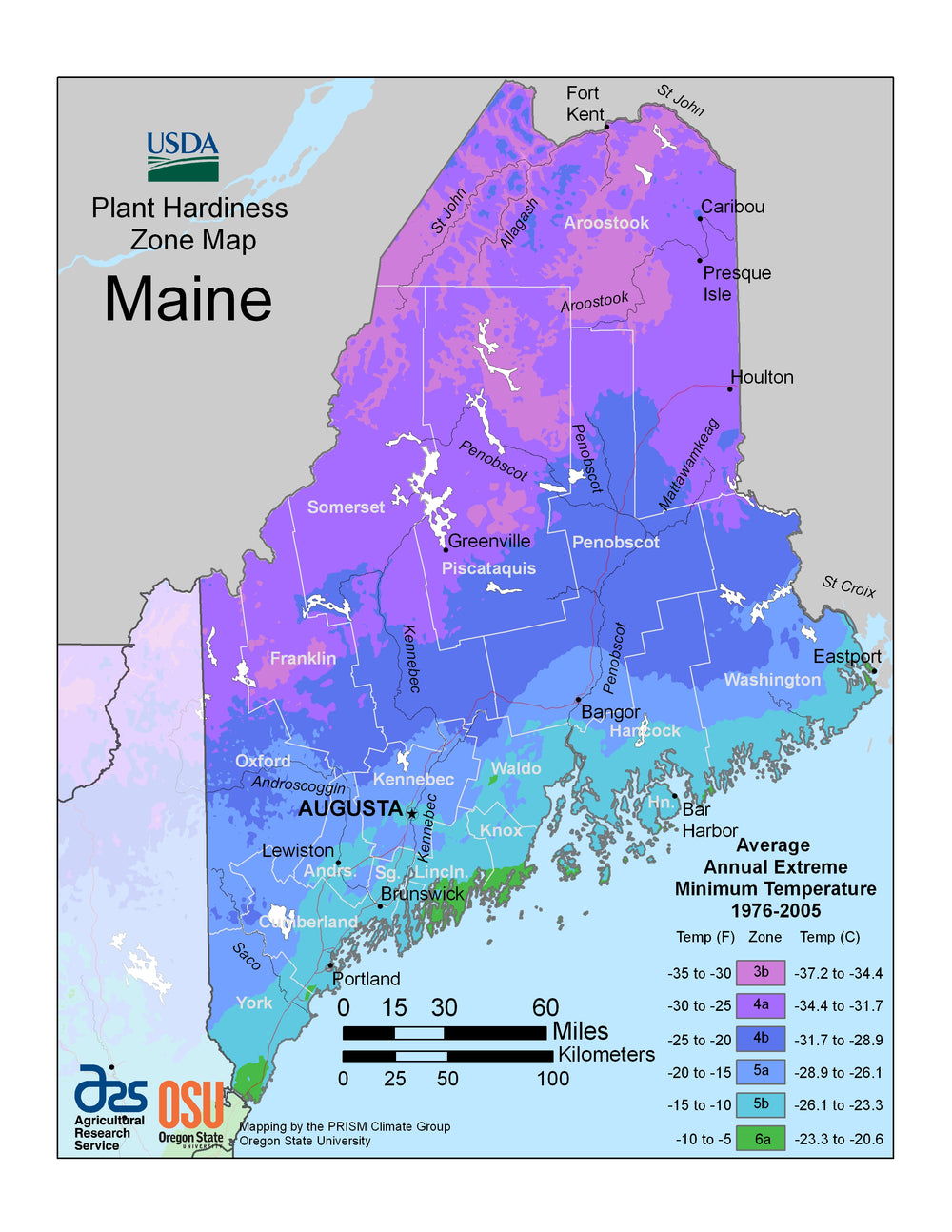Characteristics of Maine Planting Region
The climate in Maine is considered humid continental. Across the state, humid, warm summers and dark, cold winters are the norm. Additional characteristics of this planting region are:
- Cold storms
- Heavy snowfall
- Frequent rain
- Thunderstorms
- Heavy fog
The state is also known to have some of the most comfortable summers in the United States. The growing season is relatively long, with frost-free periods, the first frost typically happening around mid-September and the final frost sometime in mid-May.

A forested region in Maine | Photo by Zac Durant on Unsplash
Challenges of Growing in Maine
1. Short Growing Seasons
Although the planting season may last longer in Maine than in other states with similar zones, it’s still a limited timeframe for growing your garden. If not timed correctly, some crops may struggle to survive if they don’t reach maturity before the first frost. Therefore, planning ahead and knowing frost dates and growing timeframes when planting in this region is vital.
2. Frequent Rain
3. Long Winters
In Maine, the winters are long, dark, and very cold. This extended cool season, coupled with plenty of snow, makes growing even the hardiest vegetables difficult or impossible throughout the winter months. Protective coverings or indoor gardening are recommended to help extend growing seasons in this state.

Winter in Maine | Photo by Kelly Sikkema on Unsplash
The Benefits of Using a Greenhouse in Maine
There is a multitude of benefits to using a greenhouse in this state! You can extend your planting season by months and even enjoy homegrown warm-season vegetables into the autumn and early winter.
Additionally, with the frequent rain and heavy snow in Maine, a greenhouse will protect your hard work from any damage. Not to mention, greenhouses can also sit comfortably on a levelled base to prevent any flooding during wet months.
1. Extend your Growing Season
-
Without a Greenhouse:
The average planting season in Maine lasts around 3-4 months. This is a relatively short timeframe, meaning many vegetables may need to be sprouted indoors and transplanted at a later date.
-
With a Greenhouse:
Gardeners can expect to extend their growing season to between 7-9 months in this region. By investing in a greenhouse you’ll be able to maximize your harvest time and enjoy fresh homegrown vegetables well into the colder months.
Learn more about specific growing dates for your area and the best vegetables to plant in each part of Maine.


Customer images of the Sungrow and Sigma greenhouses in a similar climate region
2. Grow a Wider Variety of Vegetables
-
Without a Greenhouse:
The short planting season in Maine limits options for outdoor gardeners as many vegetables won’t mature before the first frost without some indoor growing assistance. Some of the best cold-hardy plants for standard gardens include:
- Radish
- Onions
- Lettuce
- Carrot
- Beets
- Cauliflower
-
With a Greenhouse:
Using a greenhouse in this state will allow you to plant a much wider variety of vegetables throughout the year. The following list includes recommended vegetables for greenhouse growing in Maine:
- Okra
- Watermelon
- Bell Peppers
- Cantaloupe
- Sweet Corn
- Cucumber
- Eggplant
- Yellow Squash
- Zucchini
- Cherry tomatoes
- Roma tomatoes
- Celery
- Chives
- Parsnips
- Leeks
- Pumpkin
- Rutabaga
- Winter Squash
-
Endive

Tomato vine | Photo by Dan Gold on Unsplash
Why Planta Greenhouses?
- Wind resistant up to 65 mph (learn more about how our greenhouses hold up in high-altitude climates).
- Withstands a snow load of up to 98 psf (480kg/square meter).
- Made with a heavy-duty galvanized steel frame.
- Polycarbonate panels provide 100% protection against UV rays.
- The Sungrow greenhouse is bell-shaped - allows the wind, snow, and hail to slide off the sides.
- Extendable (Sungrow, Sigma and Farmer models can be extended beyond 100ft)
- Made in Europe and are exclusively imported
- Maintenance-free

